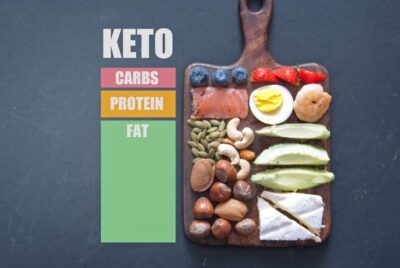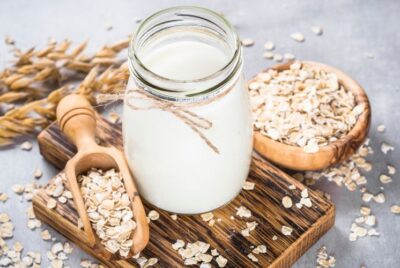Keto Cooking Ingredients: Essential Staples for Low-Carb Success
Why Ingredients Matter on Keto
Starting—or sustaining—a ketogenic lifestyle isn’t just about cutting carbs. It’s about strategically replacing them with the right high-fat, low-carb, nutrient-dense alternatives. Stocking your kitchen with the right keto staples ensures that you’re always prepared to make satisfying, fat-fueled meals without slipping back into old carb-heavy habits.
Key Ingredients for Keto Cooking
To effectively follow the keto diet, certain ingredients should become staples in your kitchen.
Proteins
Choose high-quality proteins like grass-fed beef, free-range chicken, and wild-caught fish. Eggs are also a keto favorite due to their versatility.
Healthy Fats
Embrace fats! Avocado oil, olive oil, and coconut oil should be in your pantry. Also, consider MCT oil—it’s a powerhouse in the keto community.
Low-Carb Vegetables
Greens like spinach and kale, and veggies like broccoli, zucchini, and bell peppers, are your friends. They’re low in carbs but rich in fiber and vitamins.
Essential Keto Cooking Ingredients
1. Healthy Fats for Cooking
Keto is a high-fat diet, so choosing quality fats is essential. Best Keto Cooking Fats:
- Avocado oil – great for high-heat cooking
- Coconut oil – supports ketone production
- Ghee (clarified butter) – lactose-free and rich in fat-soluble vitamins
- Olive oil – perfect for dressings and low-heat sautéing
- Tallow & lard – traditional animal fats with zero carbs
2. Keto-Friendly Proteins
While protein intake is moderate on keto, quality sources matter. Popular Keto Proteins:
- Eggs (pasture-raised if possible)
- Chicken thighs, wings, and breast
- Fatty cuts of beef (ribeye, chuck roast)
- Salmon, sardines, tuna
- Pork belly, bacon (check for added sugar!)
- Ground turkey and grass-fed meats
3. Low-Carb Vegetables
Vegetables add fiber, nutrients, and texture. Top Picks for Keto Cooking:
- Cauliflower (great rice and mash substitute)
- Zucchini (spiralized for zoodles)
- Spinach and kale
- Broccoli and cabbage
- Mushrooms
- Bell peppers (in moderation)
4. Keto Flours and Binders
For low-carb baking and thickening sauces. Keto Baking Staples:
- Almond flour (blanched for fine texture)
- Coconut flour (use sparingly—it’s very absorbent)
- Flaxseed meal
- Psyllium husk (adds chewiness)
- Xanthan gum (binder and thickener)
- Chia seeds (natural gelling agent)
5. Sugar Substitutes & Sweeteners
Skip the sugar without sacrificing flavor. Keto-Approved Sweeteners:
- Erythritol – zero glycemic impact
- Monk fruit – natural and heat-stable
- Stevia – plant-based, calorie-free
- Allulose – behaves like sugar in baking
- Swerve – popular blend of erythritol and oligosaccharides
Avoid maltitol, dextrose, and hidden sugars that can kick you out of ketosis.
6. Pantry Staples & Sauces
For easy keto meals and flavor boosts. Must-Have Keto Pantry Ingredients:
- Coconut milk or cream (unsweetened)
- Bone broth or stock (check labels)
- Apple cider vinegar
- Tamari or coconut aminos (soy sauce alternative)
- Dijon mustard
- Sugar-free hot sauce (like Frank’s RedHot)
- Mayonnaise (avocado oil-based)
7. Herbs, Spices & Flavor Enhancers
Level up your keto meals with low-carb seasonings. Keto Cooking Flavors:
- Garlic and onion powder (in moderation)
- Cumin, paprika, chili powder
- Italian herbs: oregano, basil, thyme
- Lemon zest, lime juice
- Fresh herbs like parsley, cilantro, and dill
Check spice blends for hidden starches or sugars.
8. Optional Supplements & Boosters
Some ingredients help digestion or ketone production:
- MCT oil – quick energy and brain fuel
- Electrolyte powders – prevent keto flu
- Collagen peptides – skin, joints, and gut support
- Gelatin powder – thickener and gut health
Keto Ingredients to Avoid
Not everything marketed as “keto” belongs in your cart:
🚫 Canola or soybean oil
🚫 Maltitol or sucralose
🚫 Hidden starches in sauces
🚫 Breaded or processed meats
🚫 Artificial sweeteners with high glycemic impact
Stick to whole, nutrient-dense ingredients for clean keto success.
Final Thoughts: Build a Keto Kitchen That Works for You
Having the right keto cooking ingredients on hand makes all the difference—especially when you’re short on time or energy. Whether you’re following detailed keto recipes or throwing together quick lazy keto meals, a well-stocked kitchen keeps you on track. From baking and frying to slow cooking and meal prepping, these keto staples help you stay in ketosis while still enjoying flavorful, satisfying food with minimal effort.
Frequently Asked Questions (FAQ’s)
Can I make lazy keto meals with basic staples? Yes! Lazy keto meals rely on simple, no-fuss ingredients—like eggs, cheese, avocado, and ground beef. With just a few key staples, you can whip up quick, satisfying meals without tracking every macro.
Is honey allowed on a keto diet? Although honey is natural, it’s high in sugar and not recommended on a keto diet. Opt for sweeteners like stevia or erythritol instead.
What should I avoid when stocking a keto kitchen? Avoid grains, sugar, starches, and processed seed oils (like canola or soybean oil). Also watch out for hidden carbs in sauces, spice blends, and packaged “low-carb” foods.
Do I need special ingredients to start keto cooking? Not necessarily. Many basic keto recipes use everyday ingredients like eggs, meat, leafy greens, and olive oil. However, if you’re into baking or want more variety, consider adding keto flours, MCT oil, or sugar-free condiments.
Can I eat chocolate on a keto diet? Most commercial chocolates are high in sugar. Look for dark chocolate with high cocoa content or those sweetened with keto-approved sweeteners.





Comments are closed.